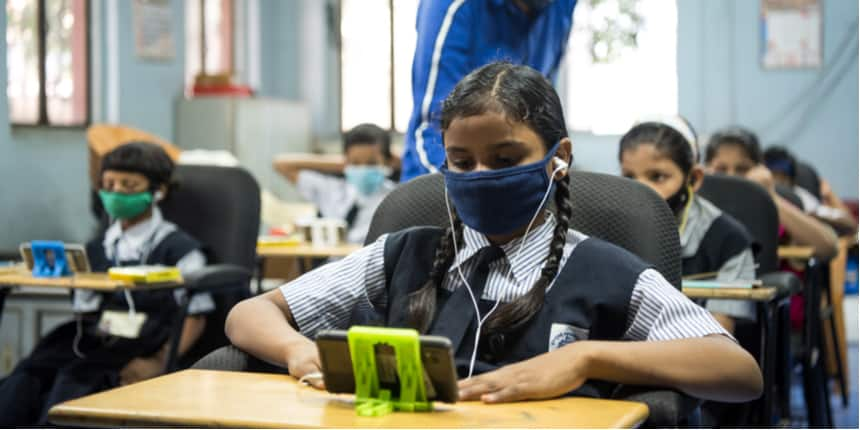Education ministry takes USD 500 million ADB loan to create ‘exemplar schools’
Atul Krishna | December 3, 2021 | 06:18 PM IST | 3 mins read
Education Ministry Loan: Rs 3,758 crore loan will go toward building ‘exemplar schools’ in Assam, Gujarat, Jharkhand, Tamil Nadu, Uttarakhand

NEW DELHI: The Asian Development Bank (ADB), a non-profit bank made up of 68 member countries, has approved a loan of USD 500 million to the education ministry to support the Samagra Shiksha Abhiyan in five states. Samagra Shiksha Abhiyan is India’s largest scheme for school education.
The project aims to aid the ministry in “transforming” certain government schools into “exemplar schools”, prevent post COVID-19 dropouts and “bring positive impact” on tribal children in five states -- Assam, Gujarat, Jharkhand, Tamil Nadu, and Uttarakhand.
Also Read| Mandatory privatisation, in education ministry, World Bank project
It also aims to improve foundational learning and reduce dropout rates, with special attention to girls and socially-disadvantaged groups, Scheduled Castes and Scheduled Tribes.
As per ADB, the total project costs is USD 1,885 million out of which USD 500 million, Rs 3,758 crore as per today’s exchange rates, will be provided by the bank.
School education outcomes
The ADB said that the financing for the project will be based on “results-based lending”.
Results-based lending is a programme by ADB in which finances are released as per a “pre-agreed and achieved intermediate and final outputs” to “focus on results during the design and implementation of government programmes”.
According to the bank, the project aims to achieve the following outcomes:
Transform a set of government schools into “exemplar schools” with essential learning resources
Scale up student-centered interventions to boost learning
Strengthen the core elements of state education for overall system improvements.
Education ministry’s ‘leader schools’
According to the ADB, the programme will focus its support for a set of “leader schools”, around 2,000 to 3,000 per state, for “learning interventions, which can be replicated within and across states”.
ADB defines leader schools as high-enrollment schools with “significant tribal populations”. The project aims to convert these leader schools into “exemplar schools”.
Also Read| What a new World Bank loan means for India's school education system
“The program will support upgrading works for learning (e.g., classrooms and libraries) and sanitation facilities of the existing schools that are being designated as exemplar schools,” the ADB said in a statement.
However, the funding will be limited to upgrading existing infrastructure and “new construction will not be allowed in the schools” under the programme.
Samagra Shiksha Abhiyan
The project also aims to assist the government in implementing the Samagra Shiksha Abhiyan in these five states.
“The program will support strategic components of Samagra Shiksha to accelerate quality outcomes in government schools, especially improved foundational learning at the primary level and reduced dropout rates at the secondary level, with special attention to girls and socially disadvantaged groups,” the ADB said in a statement.
The ADB funding will assist the SSA in the following aspects:
Transforming a set of government schools into exemplar schools
Improving learning environments in these schools with essential facilities, teaching and human resources
Expanding student-centered foundational learning at the primary level
Introducing science, technology, engineering, arts, and mathematics and 21st century skills learning for secondary students
Facilitating technology applications in teaching-learning
Augmenting localized digital learning content based on lessons from the COVID-19 pandemic
Enhancing the capacity of teachers, principals, and local officers
Establishing state assessment cells for tracking of learning outcomes
Strengthening an integrated management information system for monitoring of school performance and the state school system.
SC, ST students
The project also claims to focus on bringing “positive impact” on Scheduled Caste and Scheduled Tribe students, especially in “foundational and employable skills”.
The programme will focus on the following for SC, ST students:
Prevention of post-COVID 19 dropouts by incorporating specific incentive mechanisms for different social groups
Prepare a final list of leader schools including the schools with significant tribal populations in remote areas, as well as girls only schools
Capacity building training for teachers and school leaders to include modules on socially inclusive education
Socially inclusive foundational learning and digital learning content, including the preparation of localized learning contents
Monitoring and performance reporting including data disaggregated by sex and social backgrounds which include enrollment, dropouts, teacher training participation, etc.
ADB said that it conducted “extensive consultations” including field visits to 36 schools in five states before the funding was approved.
Follow us for the latest education news on colleges and universities, admission, courses, exams, research, education policies, study abroad and more..
To get in touch, write to us at news@careers360.com.